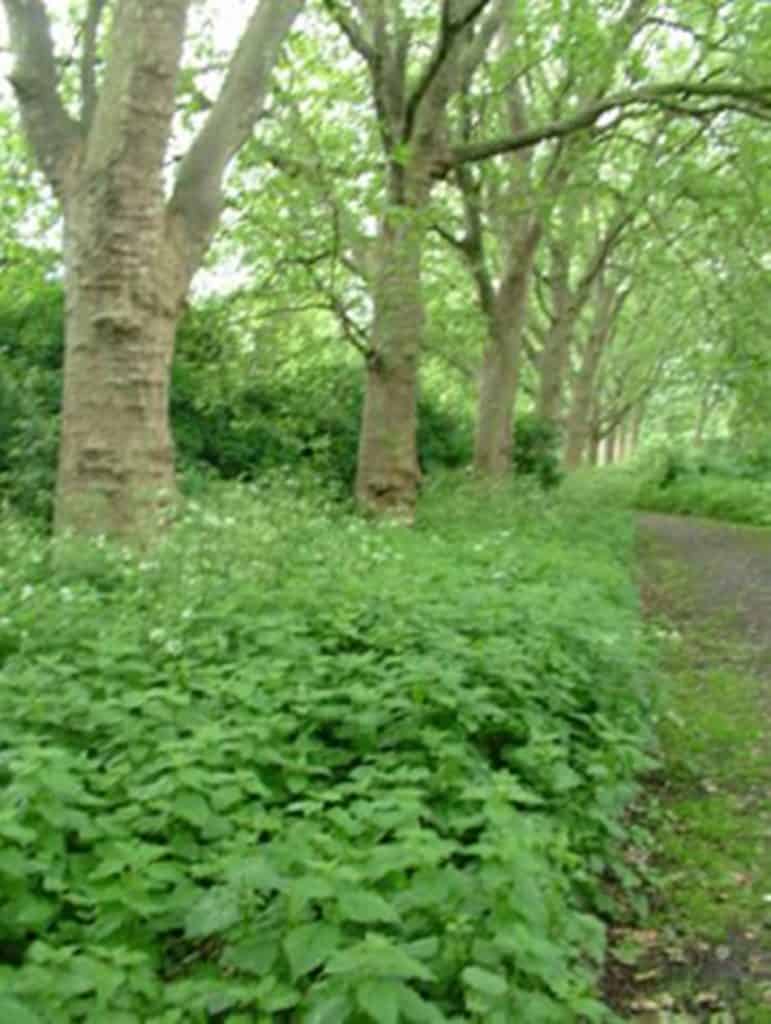Choosing a fieldwork site
This investigation works well where there is a clear environmental gradient. The ideal site for fieldwork is a line of regularly spaced trees of the same age and species running at least 500 metres from the edge of a busy road into a park or similar green space.

Line transects are marked e.g. with a long rope or tape-measure along the gradient. With line transects, samples are taken only along this line, at pre-determined intervals. Belt transects are similar, but are wider areas to be sampled along the gradient. In this case, trees will be sampled going back from the road across a wide area, so the sampling is more similar to a belt transect.
Sampling along the transect can be done by choosing similar species of trees along the transect (in this case at a range of different distances from the road). For example, one group could sample all the plane trees; another group could sample all the silver birch trees. Alternatively, mark sites to sample at equal distances along the transect. Both methods may be quite difficult; as trees at some sites may be widely spaced, a clear sequence of trees at regular intervals from the road along your transect may not be present. In this case it may be necessary to sample as many trees as possible in a wider sample area. This will introduce additional factors, such as proximity to other roads, which a straight transect attempts to eliminate. For this reason, pupils should collect as much data as possible about individual trees and their position within the site, so any anomalous results can refer to this data later.
Measuring pollution in the field
Take two samples (repetition) of particles at site one at 1m from the base of the tree. Place a 2cm length of sticky tape firmly onto the bark of the tree, leave for 10 seconds, and then remove it. Soot and other particles from the air will have adhered to the tape, along with debris such as loose bark and moss from the tree. Stick the samples onto the individual results sheet for the correct site. If there is time, a third sample can be taken and placed onto a labelled microscope slide, so that the samples can be studied in much greater detail in the laboratory.
Taking girth measurements of the trees allows an estimation of tree age. Consideration of this variable alongside the variable ‘tree species’ during analysis will aid discussion. Measure the diameter of the tree trunk using a tape measure held at shoulder height. Observe and record the presence of lichens in the results table. A data logger or sensor may be used to record noise levels at each site along the transect.
Measuring pollution in the lab
To measure the pollution on the sticky tape, the sticky tape samples are stuck onto a slide, and examined under a microscope. Mini quadrats should be made by photocopying graph paper onto acetates. An acetate grid should be laid over the pollution sample (sticky tape) and by choosing random coordinates the percentage frequency of black particles should be noted in the results table. Soot particles should be recorded, but bark and moss should be ignored. Hand lens and/or junior microscopes may be of use. Samples could be taken on the leaves instead/ as well as the bark of the tree. Instead of the ACFOR scale a colour scale could be used. Numbers would be assigned to the scale similar to pH indicators (see example beneath).
An average from the samples for each site should be found and recorded, thus the ‘sample should be sampled’.
The quantifiable data that will be collated and distributed to the class could include; distance along transect, percentage cover/ colour scale and sound recording. Along side this would be the qualitative information that the pupils collected at the sites.

Secondary and Further Education Courses
Set your students up for success with our secondary school trips and courses. Offering excellent first hand experiences for your students, all linked to the curriculum.
Group Leader and Teacher Training
Centre-based and digital courses for teachers
Experiences for Young People
Do you enjoy the natural world and being outdoors? Opportunities for Young People aged 16-25.
